The Not-So-Little Vegetable Garden that Could
Bill and Eileen Elliott found their way to self-sufficiency with more than a little help from their vegetable garden. Without precise directions, you’d never find Bill and Eileen Elliott’s house. But with some guidance, you’d find yourself standing before a rustic hand-hewn archway gate, and through that, a curving, colorful path lined with astilbe, geraniums, […]
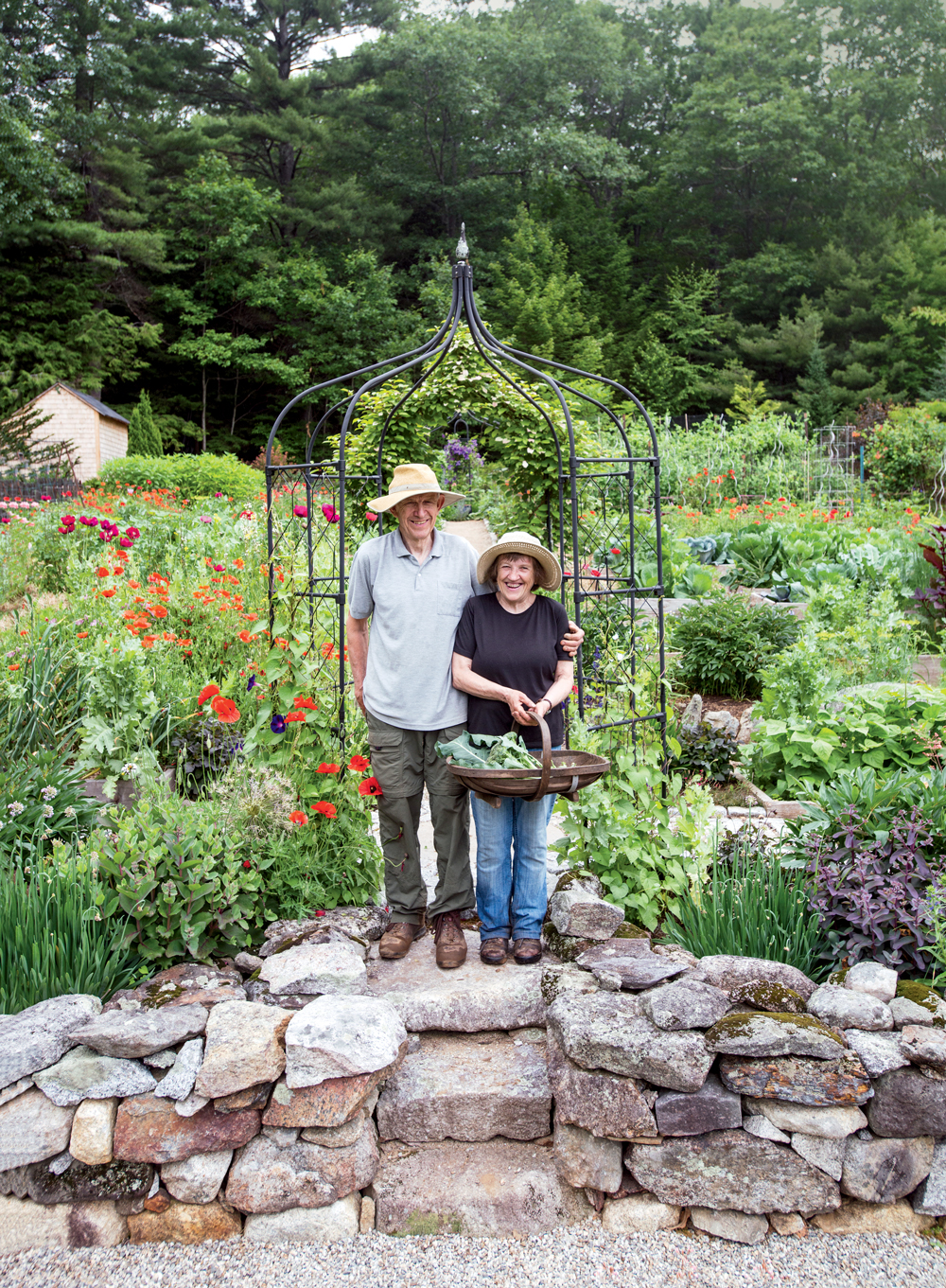
Coffee By Design | Portland, Maine
Photo Credit : Katherine KeenanBill and Eileen Elliott found their way to self-sufficiency with more than a little help from their vegetable garden.
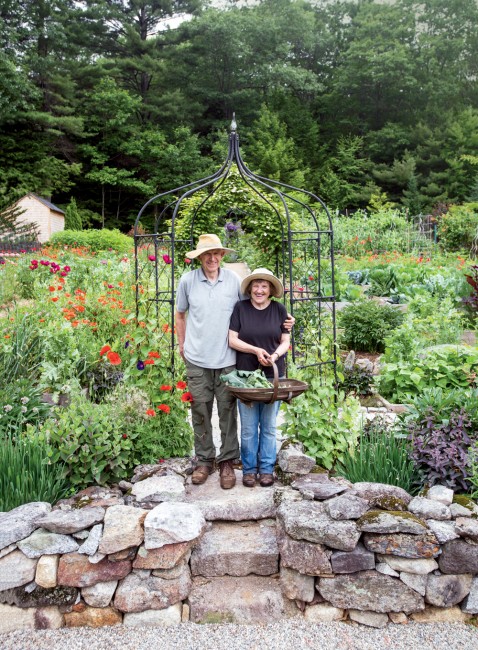
Photo Credit : Kindra Clineff
Without precise directions, you’d never find Bill and Eileen Elliott’s house. But with some guidance, you’d find yourself standing before a rustic hand-hewn archway gate, and through that, a curving, colorful path lined with astilbe, geraniums, daylilies, phlox, roses, and all manner of other garden gems. If you haven’t been diverted by the herb garden or one of the other “rooms” along the route, the path eventually arrives at a raised-bed vegetable garden, where festive poppies skirt succulent tomatoes, corn, greens, squash, and all the fixings to feed a family. Duck beneath the kiwi-smothered arbors, sidestep the billowing daylilies, and sample a string bean, because the vegetable garden is the epicenter of what these self-sufficient homesteaders are all about. Yes, it supplies fuel for their survival. But why not smell the flowers along the way?
If this sounds like Eden, it is one, of sorts: a small paradise created by one couple who dreamed of self-sufficiency and longed to escape the renters’ rut. But back in the late ’70s, when our story begins, Bill was a math teacher. Eileen also had a teaching degree and was moonlighting as a librarian, but mostly was serving as mother to their two boys, so the state of their savings account was meager when they first heard of a parcel in Hancock, New Hampshire, that nobody else wanted. Actually, the lawyer who owned the land was quite attached to his 22-or-so acres when the Elliotts made their initial inquiry in 1978, but he acknowledged that yes, the land could be reached only by a seasonal road, sitting on a rocky ledge that defied any type of motor-vehicle access, and that perhaps he wasn’t sitting on a gold mine. The site had no power lines (in fact, the nearest line was a mile and a half away) and no house (although an 1800s foundation remained)—and to call it “densely wooded” was putting it mildly. “You couldn’t put your hands out and twirl anywhere on this land,” Eileen recalls. Nevertheless, the Elliotts figured that it was their only chance at the American Dream.
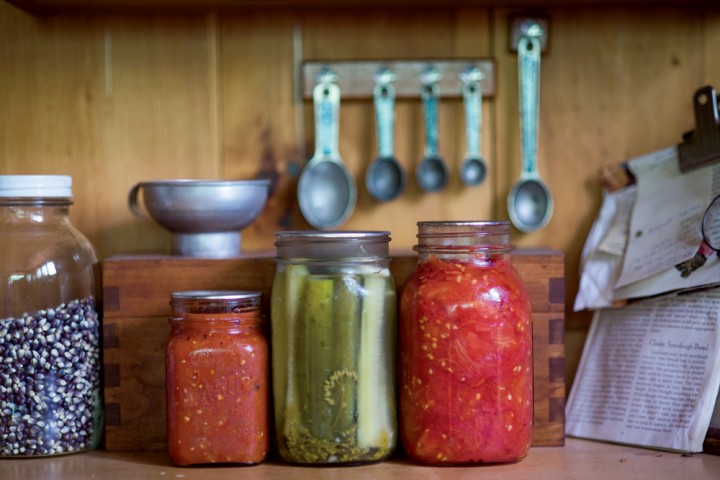
Photo Credit : Kindra Clineff
From the very beginning, the couple was happy to remain off the grid. With Scott and Helen Nearing’s book, Living the Good Life (1954), as guidance, the two pioneers built their house by hand. Using their rental home as a workshop, they cut materials with power tools there and transported them to the site. They also tackled the garden, clearing a 20-by-20-foot plot out of the woods, which was backbreaking work. “Basically, we had more rocks than soil,” Bill says. Given only the thinnest topsoil blanketing the ledge, they made compost and brought in the amendments. They learned how to grow vegetables on a plot at a community garden near their rental, visited the Nearings in Harborside, Maine (“and woke up to women doing naked handstands,” Eileen remarks wryly), and got pointers on preserving the harvest and compost production.
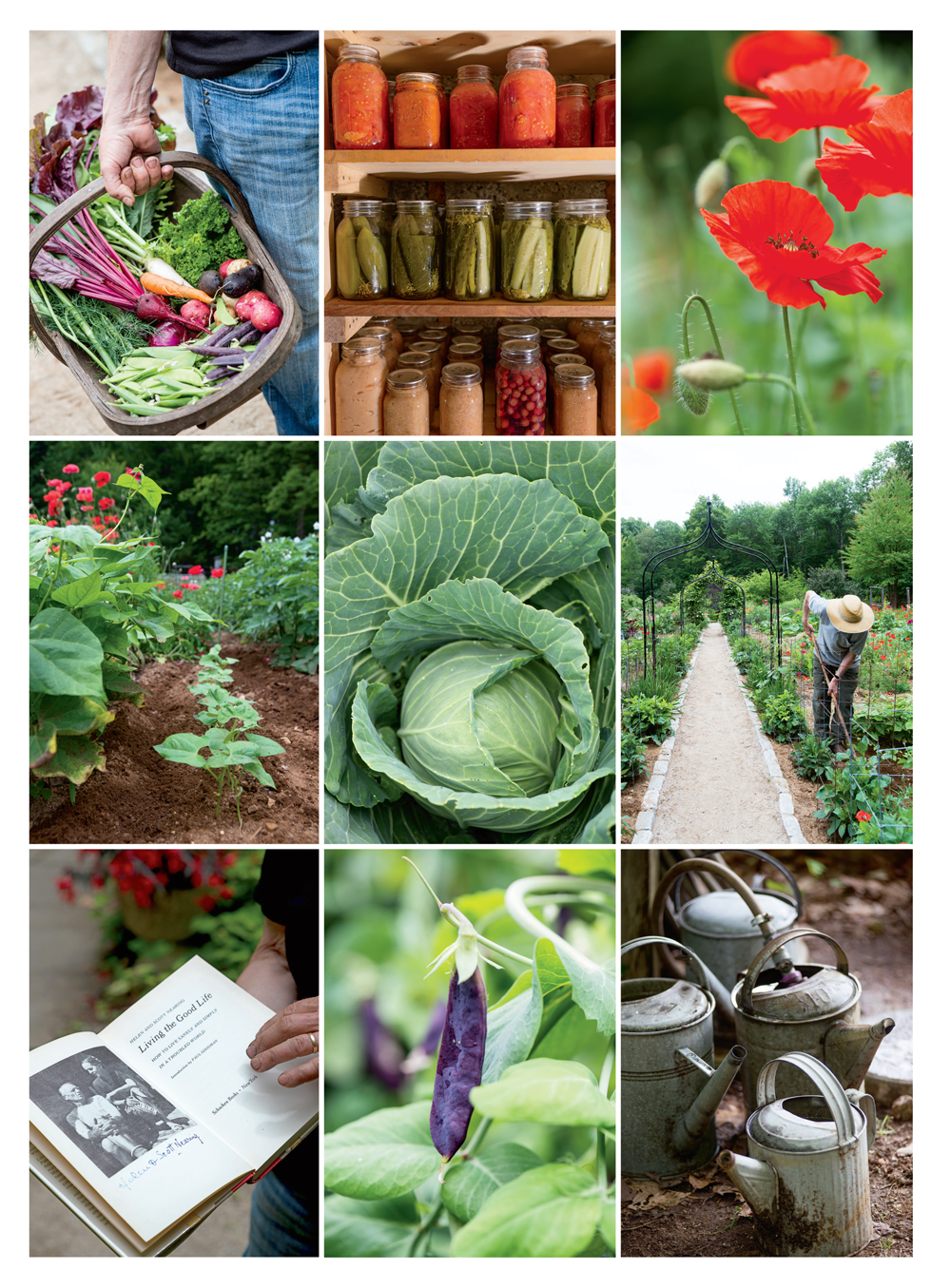
middle row: Newly sprouted green beans; a hearty-looking cabbage, ready for harvest; Bill tends to the weeding.
bottom row: The Elliotts were inspired by Scott and Helen Nearing’s experience in Maine; a burgundy ‘Blauwschokkers’ peapod; water for the garden is available from a 300-gallon storage tank.
Photo Credit : Kindra Clineff
That was 37 years ago, and their garden has become even more focused with time. Now in their early seventies (though you’d never guess it to look at them), the Elliotts still park their car a good eighth of a mile from the house and walk in (often with a cart filled with groceries or other provisions), past a series of beautifully orchestrated plantings. They maintain all manner of ornamental gardens filled with arcane shrubs and rare peonies that kindle sensibilities beyond their tastebuds.
But no place is as hard-working as the vegetable garden, designed around a series of raised beds built to adjust for the sloping ridge and to create flat spaces to plant. Another advantage: “Raised beds hold water better than open ground,” Bill observes. (Gas-fueled pumps assist with watering.) Meanwhile, large-footprint crops such as corn, peas, squash, and tomatoes are planted directly in the ground. The garden furnishes cucumbers for pickling (57 pints during one spectacular season!), as well as cans of blueberries, goose-berries, pears, tomato sauce, chutneys, and the green and yellow beans that line the shelves of their root cellar, along with potatoes, parsnips, pumpkins, onions, garlic, cabbage, winter squash, and other essentials. “When the ground has thawed,” Eileen says, “we’re in there full-time.”
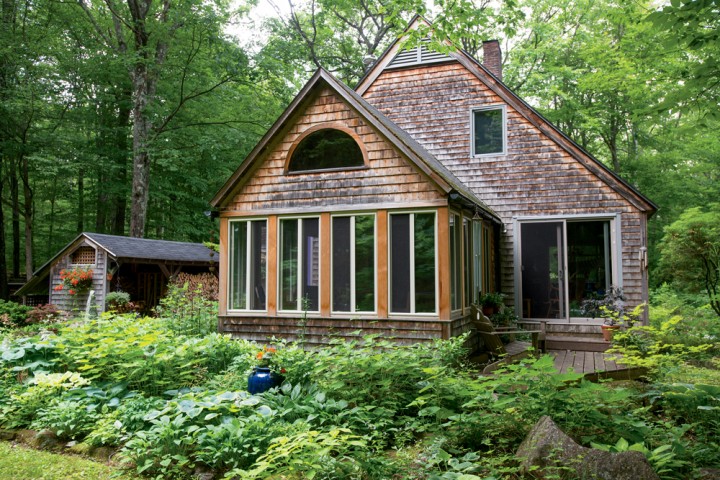
Photo Credit : Kindra Clineff
The garden’s first order is to provide a year’s worth of food, “but we go for tasty,” Eileen says. So the tomatoes tend to be heirlooms (their favorites: ‘Cherokee Purple’, ‘Japanese Black Trifele’, and ‘Purple Russian’), and the Elliotts don’t shy away from experimentation if it might promise a novel taste sensation. This year, edamame soybeans were on trial, but a mouse stole most of the harvest; they plan to try again. To maximize efficiency, they rotate crops, so when they’ve harvested the early peas, that slot goes to members of the cabbage family, which benefit from the nitrogen left by the peas. They lay straw mulch on the paths, but don’t mulch the beds themselves, because the straw proves to be an open invitation to voles. “And anyway, I like to weed,” Eileen says.
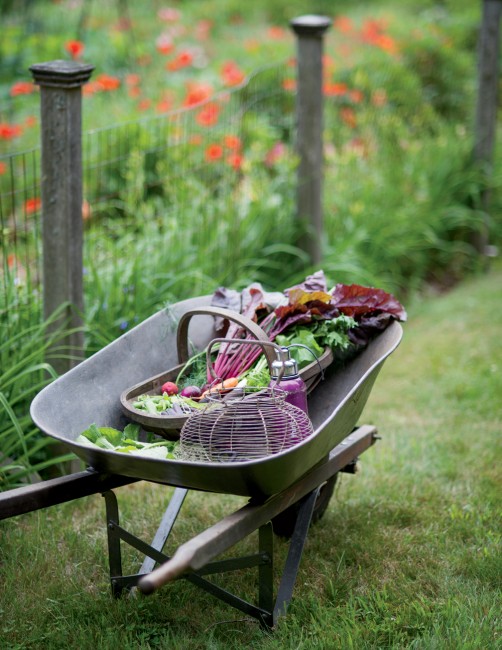
In addition to vegetables, the Elliotts grow a wide range of fruits and berries, herbs, and ornamental flowers, trees, and shrubs.
Photo Credit : Kindra Clineff
There’s practicality here, but also poetry. Poppies are allowed to seed themselves in all over the place—just for the beauty they lend. The couple’s favorite variety of soup pea is ‘Blauw-schokkers’, simply because it has burgundy pods. Ditto for ‘Tiger Eye’ beans—they’re outrageously good-looking. And long ago, Bill gave in to Eileen’s penchant for sneaking dahlias, peonies, clematis, and all sorts of other companion bloomers into the vegetable garden to feed the soul—even though flowers are plentiful elsewhere.
Today, the garden has grown to two acres. “Both of us are expansive people,” Bill admits. Most of the added space is focused on ornamentals—although herbs, fruits, and berries are sprinkled around.
“From the start we figured that we’re hard-working people, and we can do this,” Eileen recalls.
“There’s no such thing as low-maintenance gardening,” Bill adds. “It’s all hard work and time-consuming. But we’re completely drawn to it.”

Photo Credit : Kindra Clineff
Yes, they have to heat the water for washing, and the laundry is done in a hand-crank machine. Absolutely, somebody needs to stay home and feed the woodstove. But with a root cellar full of pickles and all the jams and jellies anybody could ever consume—life is good. They certainly weren’t the only back-to-the-landers inspired to homestead in the 1970s, but they’re among the movement’s few survivors.
“Most people didn’t stick it out,” Bill admits. But what started as their only option is now a life they wouldn’t have any other way.







